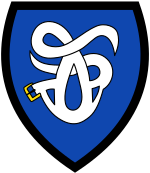holster
The halter is a bitless piece of equipment that is used to lead and tie an animal. A halter consists of a headpiece, cheek pieces and a band that runs around the nose above the nostrils. Some halter types also have a throat strap and a connecting piece between the noseband and the throat strap. Halters are mostly made of leather or strap. If reins are attached to the halter, the halter can also be used for riding, depending on the temperament of the animal.
A halter in the sense of this article is not to be confused with the term noseband used in equestrian sport , which is part of the bridle and serves to distribute the rein pressure on the bridge of the nose.
Stable halter
The most commonly used form of halter is the stable halter. A stable halter sits loosely and is made of wide, sturdy straps so that it can be carried comfortably for the horse and does not interfere with eating.
The stable halter is placed around the animal's head and connected to the lead rope with a panic hook . It is fetched from the pasture or taken out of the stable. It is tied to the rope with a tie knot , for example for cleaning or hoof care. In the pasture and in the box, the halter is usually removed so that the animal cannot get stuck with it.
horse riding

A bridle is commonly used when riding horses and mules .
For trail riding , but there are also halter ( trail riding halters ) that can be created under the normal Bridle, to easily connect to the mount during short breaks. The bridle worn over it can simply be removed for eating and during long breaks. On the way, the rope is attached to the saddle.
The shepherds of the Maremma have also developed a halter for their work horse , the Maremmano , which is worn under the bridle and which is used to tie the horse.
Rope halter
Rope halters have been used for leading, riding, and ground work with horses for centuries.
A rope halter serves as an easy replacement for a stable halter when leading and when working on the ground. It is knotted from a single long rope , often using the fiador knot . A rope halter is usually made to measure because the knots are difficult to adjust. When tying, always use a tying knot that is easily detachable in case of panic .
With two loops on the left and right and reins, the rope halter can also be used for riding. The knots sit at sensitive points on the horse's head, so the effect on the animal is stronger than with a stable halter that is not very suitable for riding. It is mostly ridden "on the long rein".
When trail riding, the rope halter is used equally for riding, leading and tying. Here halter, reins and lead rope are knotted from one piece of rope. On the way, the free end of the tether hangs rolled up on the saddle like a lasso. For guiding or tying, the reins are placed over the saddle horn and the tether is attached to a beam or to a tether stretched between two trees.

coat of arms
Description of coat of arms : The coat of arms of the city of Haltern am See is a stylized halter on a blue background.
Examples
Llama with halter
Dromedary with lead halter
Trample with noseband
Cow with a noseband at Thanksgiving
See also
Web links
Individual evidence
- ↑ Johann Baptista Galiberti: Neugebahnter playground and opened Riding School. Sambt attached stud regulations and thorough fencing, as well as the horses Cur and Artzney [...]. Translated into German by Matthaeus Drummer von Pabenbach, Vienna (Michael Rieger) 1660; New print Leipzig 1984, pp. 70-75 ( tear-off and various Nas tapes ).
- ↑ preparation of a node holster (Engl.) Tie a first class rope holder; on naturalhorse.com
- ↑ Homemade : riding, hiking, tethering, pasture tying pegs, rope, guide rope all-round halters . in: Freizeit im Sattel, 2/1983







